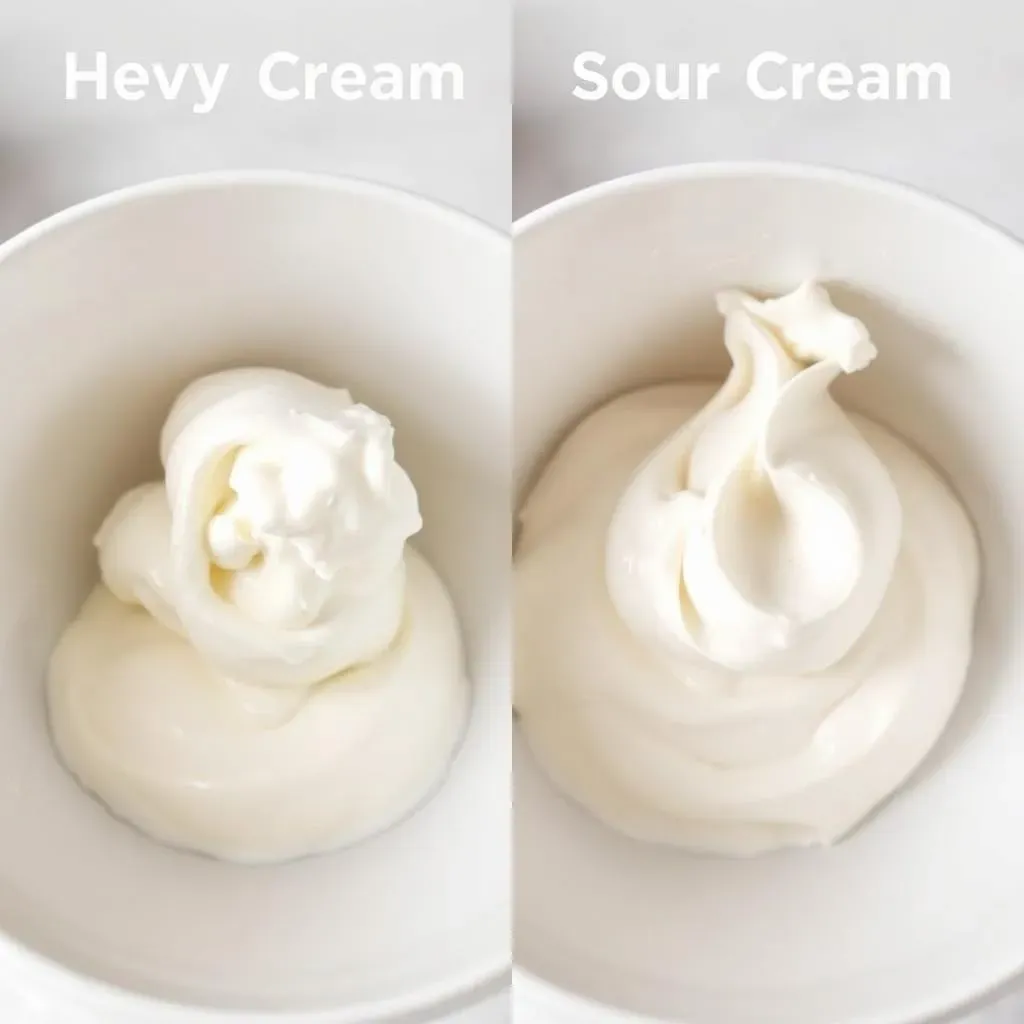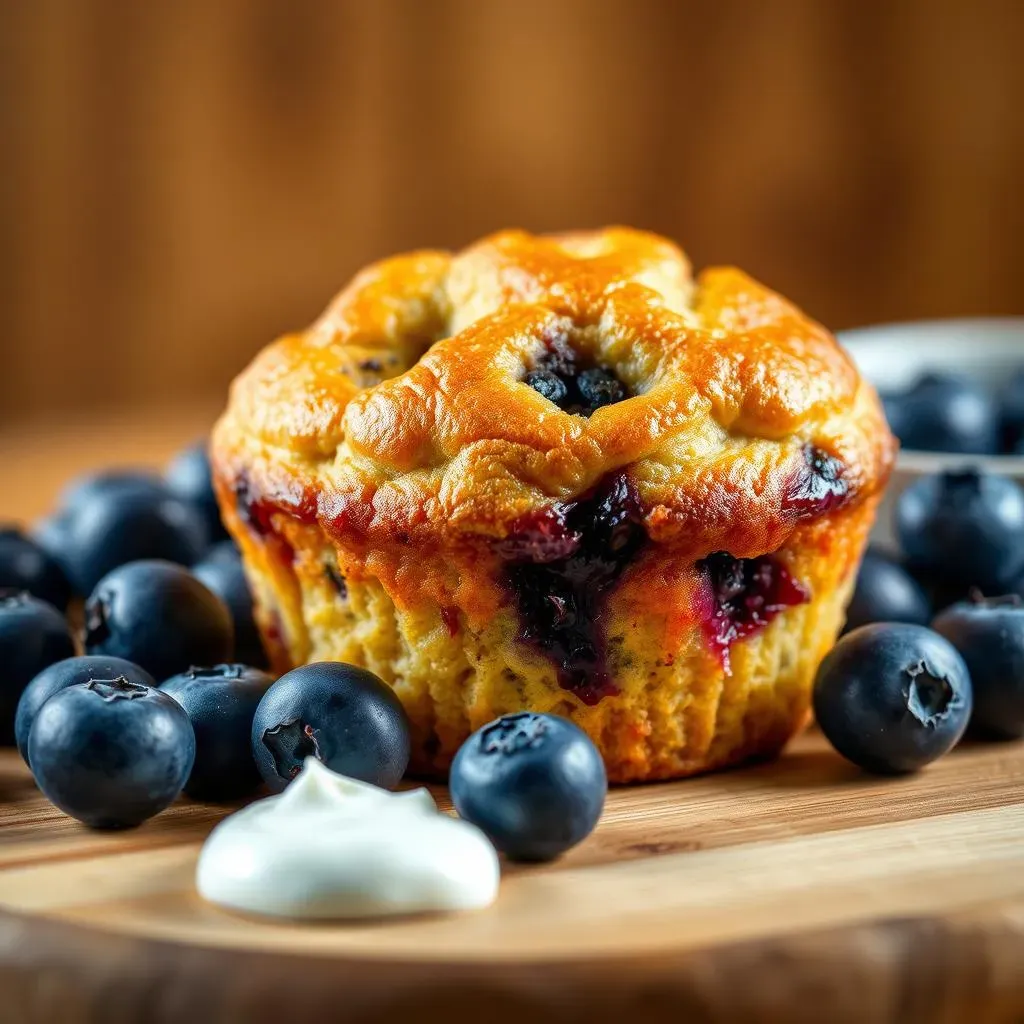Table of Contents
Ever stared blankly at a baking recipe, realizing you're missing a key ingredient – heavy cream? Don't panic! Many home bakers wonder, "Can I substitute sour cream for heavy cream in baking?" This article is your ultimate guide to answering that very question. We'll explore the crucial differences between sour cream and heavy cream, examining their impact on texture and flavor in baked goods. Next, we'll dive into practical examples of when a sour cream substitution might work, and just as importantly, when it might not. We'll uncover proven techniques and recipes to help you achieve baking success even when your pantry's a little less stocked than you'd like. Finally, we'll explore delicious alternatives to both sour cream and heavy cream, ensuring you're equipped to tackle any baking challenge, regardless of dietary restrictions or ingredient availability. Get ready to unlock a world of baking possibilities – let's get started!
Understanding the Differences: Sour Cream vs. Heavy Cream

Understanding the Differences: Sour Cream vs. Heavy Cream
Fat Content and Texture
Let's start with the most obvious difference: fat content. Heavy cream is, well, heavy on the fat – typically boasting around 36% milkfat. This high fat content gives it that luscious, thick texture, perfect for whipping into fluffy clouds or adding richness to sauces. Sour cream, on the other hand, usually clocks in around 18-20% milkfat. It's still creamy, of course, but its texture is noticeably thinner and tangier. Think of it like this: heavy cream is like a luxurious velvet robe, while sour cream is more like a cozy, comfortable sweater.
This difference in fat content significantly impacts how each behaves in baking. Heavy cream contributes a significant amount of richness and moisture, often leading to a tender crumb. It also plays a role in creating a smooth, creamy texture in frostings and fillings. Since sour cream has less fat, it will have a less dramatic impact on these aspects. For more info on replacing sour cream, check out our guide on sour cream substitutes.
Ingredient | Fat Content (%) | Texture |
|---|---|---|
Heavy Cream | 36% | Thick, rich |
Sour Cream | 18-20% | Thinner, tangy |
Acidity and Flavor
Beyond fat content, acidity plays a significant role. Sour cream gets its name from its distinct tang, thanks to the lactic acid bacteria used in its production. This tanginess can add a lovely bright note to certain baked goods, like muffins or quick breads. Heavy cream, being less acidic, contributes primarily richness and texture. In some recipes, the slight acidity of sour cream can even help with leavening, interacting with baking soda to create a lighter texture.
However, this acidity can also be a drawback. In recipes where a neutral flavor profile is desired, the tang of sour cream could clash. If you’re baking delicate cakes or cookies where subtlety is key, the sour cream might throw off the balance. Consider exploring substituting sour cream for Greek yogurt in baking for a slightly less tangy alternative.
- Heavy cream: Rich, neutral flavor
- Sour cream: Tangy, slightly acidic
The Impact on Baking
The interplay of fat content and acidity determines how sour cream and heavy cream impact your baked goods. Heavy cream primarily adds richness, moisture, and sometimes helps create a tender crumb. In contrast, sour cream offers both moisture and a tangy flavor, potentially influencing the overall taste and even aiding in leavening. Think of it as a balancing act – sometimes the tang complements the other flavors, other times it might overpower them.
Therefore, successfully substituting sour cream for heavy cream depends heavily on the specific recipe. In recipes where a rich, neutral flavor is desired, heavy cream is usually the better choice. But in recipes where a tangy note and slightly less richness are acceptable, sour cream can sometimes work surprisingly well. For instance, you might find success using sour cream in muffins or quick breads but not in a delicate sponge cake. Want to know more about other substitutions? Check out our guide on substituting sour cream for half-and-half.
Baking with Sour Cream: What to Expect

Baking with Sour Cream: What to Expect
Texture and Moisture
Sour cream's lower fat content compared to heavy cream means it'll add less richness and a slightly less tender crumb to your baked goods. Think of it as a subtle difference, not a night-and-day transformation. It will, however, still contribute moisture, which is key in many baked items. Cakes, muffins, and quick breads will still be moist, but perhaps not quite as luxuriously so as if you used heavy cream. The tangy flavor will also be noticeable, so keep that in mind when choosing your recipe.
You'll find that sour cream works best in recipes that already have a relatively moist base or where the tangy flavor complements the other ingredients. For example, a sour cream coffee cake might benefit from the extra moisture and acidity, creating a deliciously moist and slightly tangy treat. If you're unsure about the best way to substitute sour cream, check out this article on using Greek yogurt instead of sour cream.
- Increased moisture
- Less richness than heavy cream
- Noticeable tangy flavor
Flavor Profile and Potential Interactions
The hallmark of sour cream is undoubtedly its tang. This tanginess stems from the lactic acid bacteria present during fermentation and it adds a unique dimension to baked goods. This can be a fantastic addition to recipes where a bright, slightly acidic flavor profile is desirable, such as muffins, cornbread, or even some types of cookies. However, in recipes calling for a more delicate or neutral flavor, this tanginess might be overpowering or clash with other ingredients. Consider the overall flavor profile of your recipe before making the swap.
Remember that sour cream's acidity can also react with other ingredients. For instance, it can interact with baking soda, potentially leading to a slightly more airy texture. However, this isn't always a predictable outcome, and excessive acidity might negatively impact the overall structure of your baked goods. For more options, explore our comprehensive guide on various sour cream substitutes.
Recipe Type | Sour Cream Suitability | Expected Outcome |
|---|---|---|
Muffins | Good | Moist, tangy crumb |
Delicate Cakes | Poor | Potentially dry, off-flavor |
Successful Substitutions: Recipes and Techniques

Successful Substitutions: Recipes and Techniques
Muffin Magic
Let's start with muffins! These are often forgiving when it comes to ingredient swaps. The moist, slightly crumbly texture of muffins means the slightly less rich texture of sour cream doesn't stand out as much. The slight tang can even enhance certain flavors, like blueberry or cornbread. In a recipe calling for 1/2 cup of heavy cream, try substituting 1/2 cup of sour cream. You might find your muffins are even more moist and flavorful. Don't be afraid to experiment!
Remember, every recipe is different. If you're baking something particularly delicate, using sour cream might lead to unexpected results. For more information on other options, consider checking out our guide on substituting sour cream for Greek yogurt in baking.
- Blueberry muffins
- Cornbread
- Banana nut muffins
Quick Breads and Beyond
Quick breads, similar to muffins, often benefit from the added moisture of sour cream. The slightly acidic nature of sour cream can also complement the flavors in many quick bread recipes, adding a delightful tang. This works particularly well with savory quick breads or those containing ingredients like cheese or herbs. Again, a 1:1 substitution often works well, but always keep an eye on the final product's texture and adjust as needed.
However, remember that sour cream's tanginess isn't always desirable. In recipes where a neutral flavor is key, stick with heavy cream. For a deeper understanding of sour cream alternatives, you might find our guide on different sour cream substitutes helpful.
Recipe | Sour Cream Success? | Notes |
|---|---|---|
Cornbread | Yes | Enhances savory flavors |
Banana Bread | Maybe | Might be slightly tangy |
Cakes and Cookies – Proceed with Caution!
Now, let's talk about cakes and cookies. These are generally more sensitive to ingredient substitutions. The delicate balance of flavors and textures in cakes and cookies means that the addition of sour cream's tanginess could be a recipe for disaster. The lower fat content might also result in a drier crumb. While you *might* find success in some recipes, it's generally best to stick with heavy cream for optimal results.
If you're determined to experiment, start with a recipe that already includes some acidic elements, like lemon or buttermilk. Even then, a partial substitution might be safer – for example, using half sour cream and half heavy cream or milk. For more comprehensive guidance on substitutions, see our article on using sour cream in place of half-and-half.
Alternatives to Both: DairyFree and Other Options

Alternatives to Both: DairyFree and Other Options
Dairy-Free Delights
Let's face it, not everyone can or wants to use dairy. Luckily, there are plenty of dairy-free alternatives to both heavy cream and sour cream that can work wonders in baking. For a heavy cream substitute, consider full-fat coconut milk (the thick part from the can) or a store-bought vegan heavy cream. These will provide a similar richness and texture, though the flavor might be slightly different. For sour cream, you can use full-fat coconut yogurt, cashew cream, or even silken tofu blended with lemon juice and a touch of salt to mimic the tang.
The key here is to understand that the flavor profile will shift. Coconut milk adds a subtle coconut flavor, while coconut yogurt offers a slightly sweeter, tangier taste. Cashew cream provides a creamy, neutral base, while tofu creates a surprisingly close approximation to sour cream's texture, though it requires some extra work. Remember to always check out our guide on substituting almond milk for sour cream for more ideas.
Dairy-Free Substitute | For... | Flavor Profile |
|---|---|---|
Full-fat Coconut Milk | Heavy Cream | Subtle Coconut |
Coconut Yogurt | Sour Cream | Sweet, Tangy |
Other Creative Substitutions
Beyond dairy-free options, there's a whole world of other creative substitutions you can explore. For heavy cream, you can sometimes use a combination of milk and melted butter or even full-fat Greek yogurt thinned with a little milk to achieve a similar consistency. For sour cream, plain yogurt (Greek or regular), crème fraîche, or even mayonnaise (yes, really!) can work in a pinch, depending on the recipe. Mayonnaise might sound strange, but its creamy texture and neutral flavor can work surprisingly well in some recipes.
However, remember that each substitution will impact the final product's flavor and texture in unique ways. Experimentation is key! Start with small substitutions to see how the ingredient changes the final product, and adjust accordingly. For example, if you want to replace sour cream, you might want to check out our guide on using plain yogurt as a substitute.
- Milk + Melted Butter (for heavy cream)
- Greek Yogurt (for sour cream)
- Crème Fraîche (for sour cream)
- Mayonnaise (for sour cream – in certain recipes!)